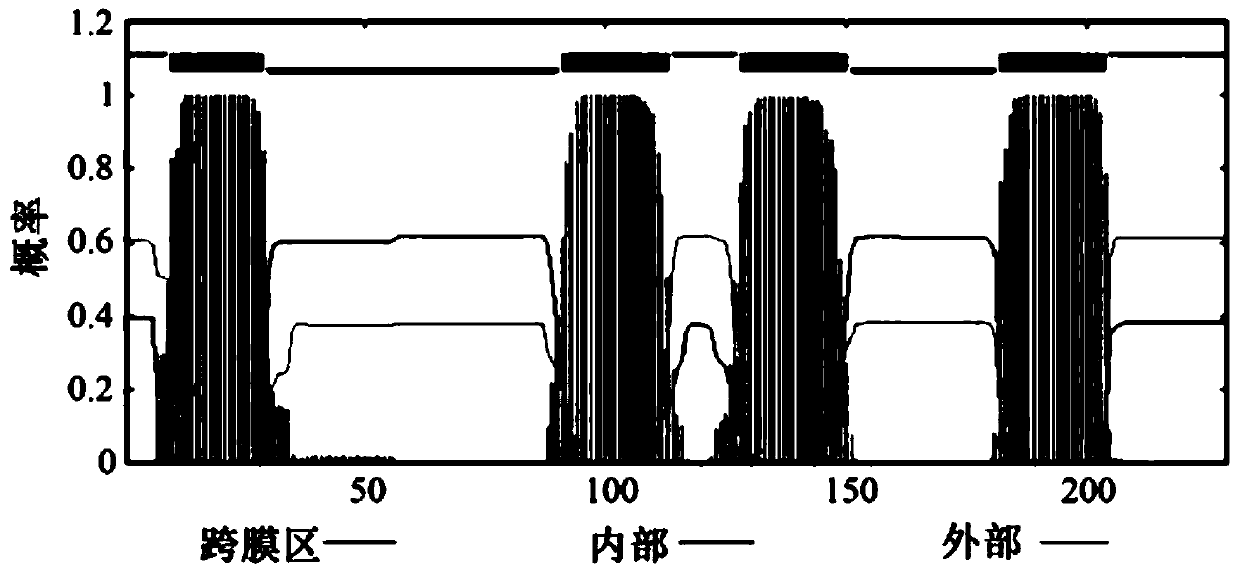Application of CLRN3 protein as cell surface identification protein for separating X sperms
A cell surface and protein technology, applied in the biological field, can solve the problems of low abundance and few sex-specific proteins, and achieve the effects of small harmful effects, low cost, and small damage
- Summary
- Abstract
- Description
- Claims
- Application Information
AI Technical Summary
Problems solved by technology
Method used
Image
Examples
Embodiment 1
[0050] Example 1, the specific expression of CLRN3 protein in X sperm
[0051] 1. Acquisition of sperm total membrane protein
[0052] 1. The sperm sample A and the sperm sample B of the Holstein bull were separated by flow cytometry. Neither sperm sample A nor sperm sample B contained protein of animal origin.
[0053] Sperm sample A contains 120 million X sperm, and the separation purity of X sperm is ≥95%.
[0054] Sperm sample B contains 120 million Y sperm, and the separation purity of Y sperm is ≥90%.
[0055] 2. After completing step 1, use Minute TM Plasma Membrane Protein Isolation and CellFraction Kit extracts the total membrane protein of sperm (sperm sample A or sperm sample B). Specific steps are as follows:
[0056] (1) Take a centrifuge tube (specification: 15 mL), add a sperm sample, centrifuge at 850 g for 20 min at 4°C, and discard the supernatant.
[0057] (2) After completing step (1), take the centrifuge tube, add 5 mL of pre-cooled sucrose aqueous ...
Embodiment 2
[0092] Example 2, predicting the transmembrane structure and subcellular localization of CLRN3 protein
[0093] The antigen suitable for separating X and Y sperm by protein immunization must be a cell surface protein, so that it will not destroy the cell structure and affect the sperm motility after combining with the antibody. Having a transmembrane structure is the basis for ensuring the stability of the antigen. The more transmembrane times, the less likely the cell surface antigen is to escape.
[0094] 1. Predict the transmembrane structure of CLRN3 protein
[0095]The transmembrane structure of CLRN3 protein was predicted by TMHMM Server v.2.0 (http: / / www.cbs.dtu.dk / services / TMHMM / ).
[0096] Forecast results see figure 1 . The results showed that the transmembrane times of CLRN3 protein was 4 times.
[0097] 2. Predict the subcellular localization of CLRN3 protein
[0098] WoLF PSORT (https: / / wolfpsort.hgc.jp / ) was used to predict the subcellular localization of CL...
Embodiment 3
[0101] Embodiment 3, Western Blotting detects the expression of CLRN3 protein in bovine X, Y sperm
[0102] TBST buffer: pH 7.5, 20 mol / L Tris-HCl buffer containing 0.05% (v / v) Tween20 and 140 mol / L NaCl.
[0103] 1. Perform 10% SDS-PAGE gel electrophoresis on the total sperm membrane protein (sperm sample A total membrane protein or sperm sample B total membrane protein), and then transfer it to a nitrocellulose membrane. (v / v) Skim milk TBST buffer blocking 1h.
[0104] 2. After completing step 1, add rabbit anti-CLRN3 and incubate overnight at 4°C.
[0105] 3. After completing step 2, wash 4 times with TBST buffer, and then incubate with horseradish peroxidase (HRP)-coupled secondary antibody for 1 h at room temperature.
[0106] 4. After completing step 3, wash 4 times with TBST buffer, and then detect with ECL reagent.
[0107] According to the above steps, replace the rabbit anti-CLRN3 in step 2 with TUBLIN, and keep other steps unchanged, as an internal reference.
PUM
 Login to View More
Login to View More Abstract
Description
Claims
Application Information
 Login to View More
Login to View More - R&D
- Intellectual Property
- Life Sciences
- Materials
- Tech Scout
- Unparalleled Data Quality
- Higher Quality Content
- 60% Fewer Hallucinations
Browse by: Latest US Patents, China's latest patents, Technical Efficacy Thesaurus, Application Domain, Technology Topic, Popular Technical Reports.
© 2025 PatSnap. All rights reserved.Legal|Privacy policy|Modern Slavery Act Transparency Statement|Sitemap|About US| Contact US: help@patsnap.com


